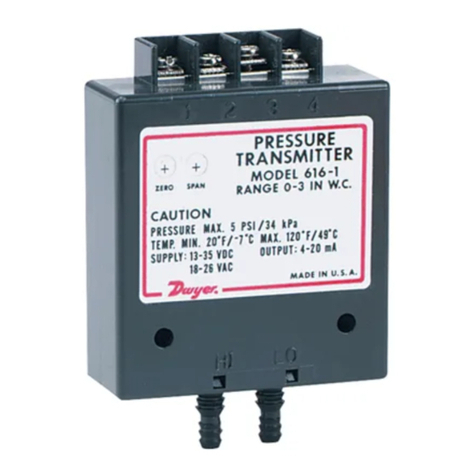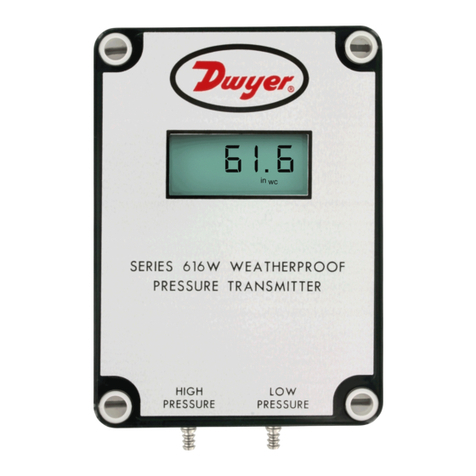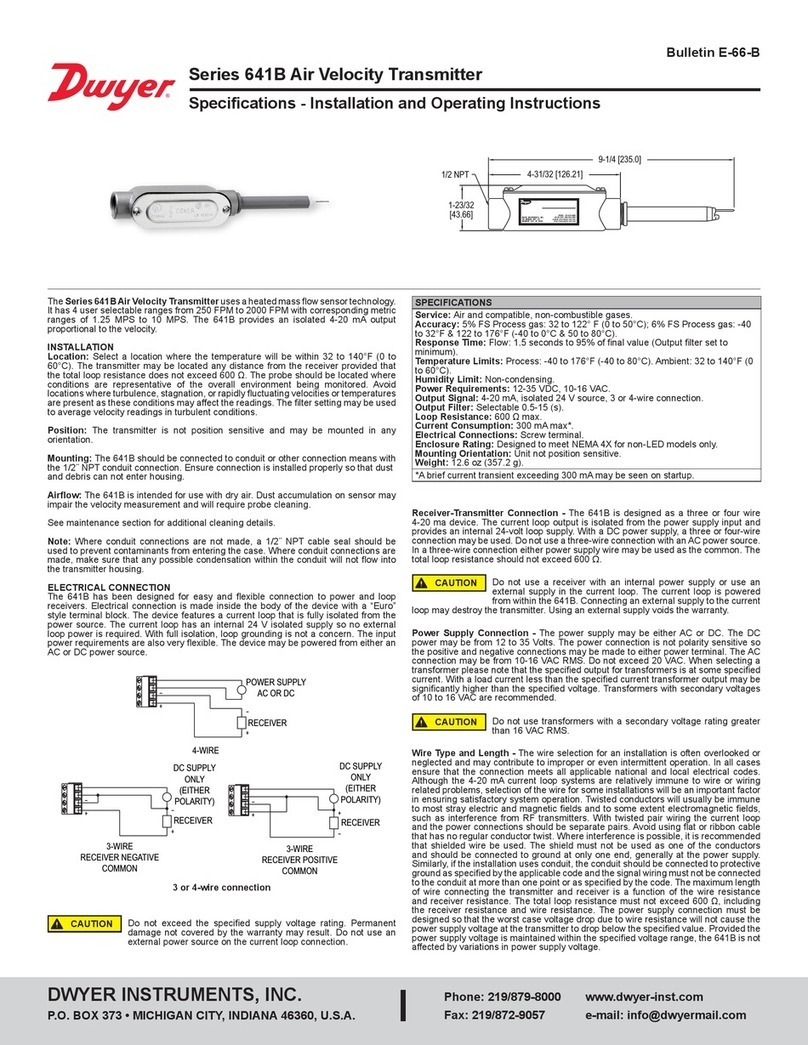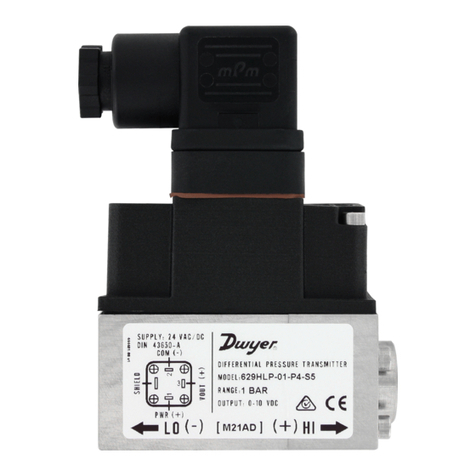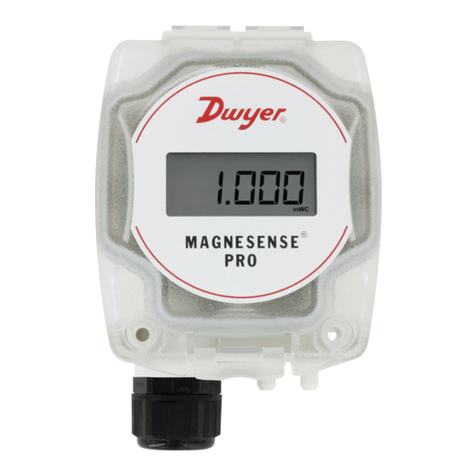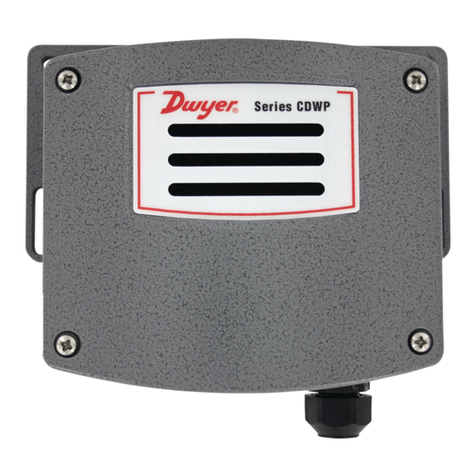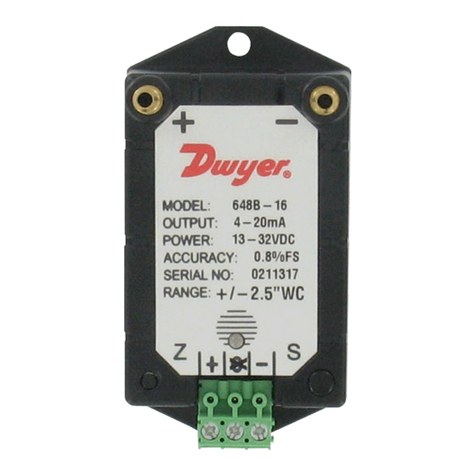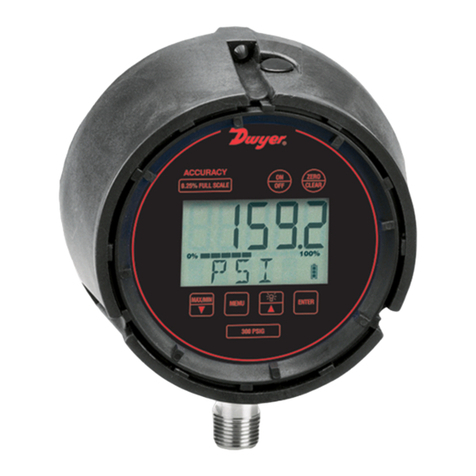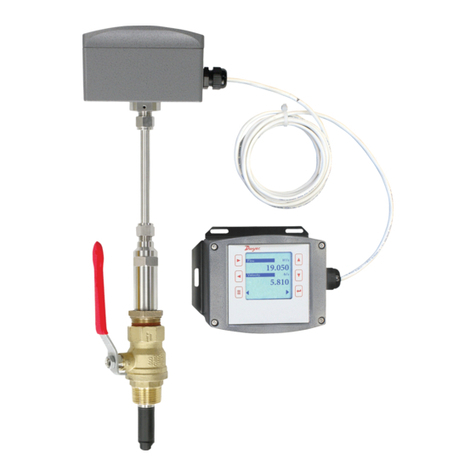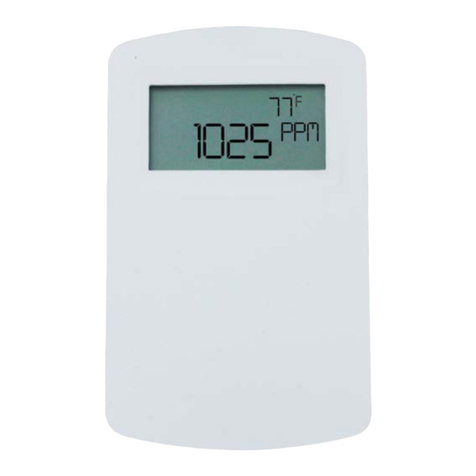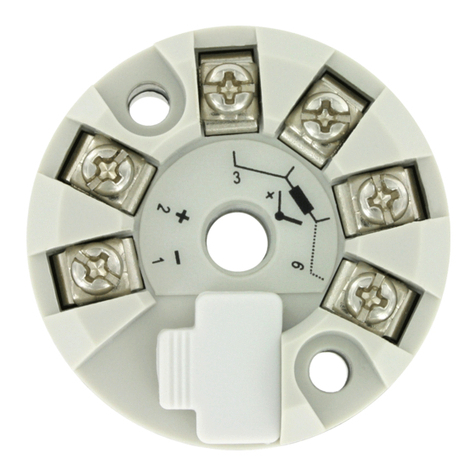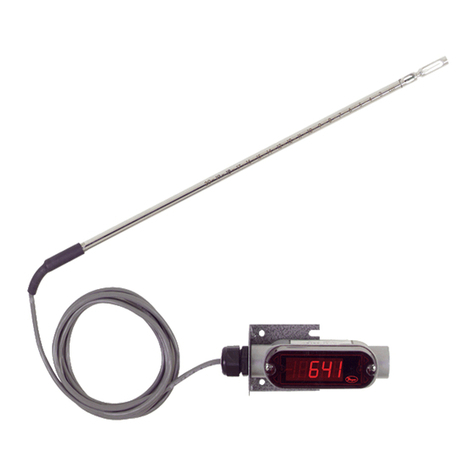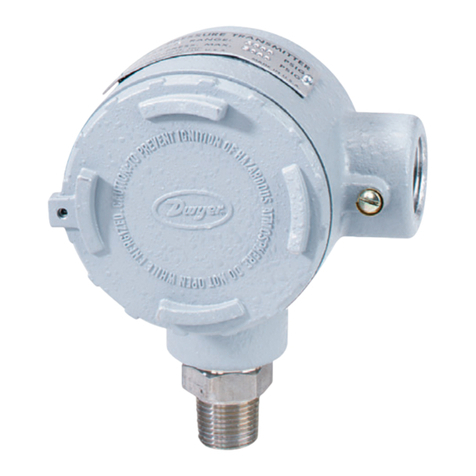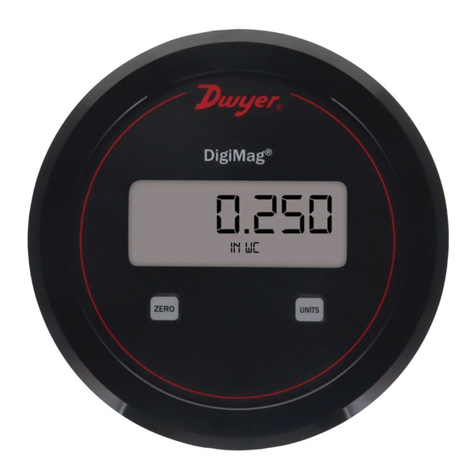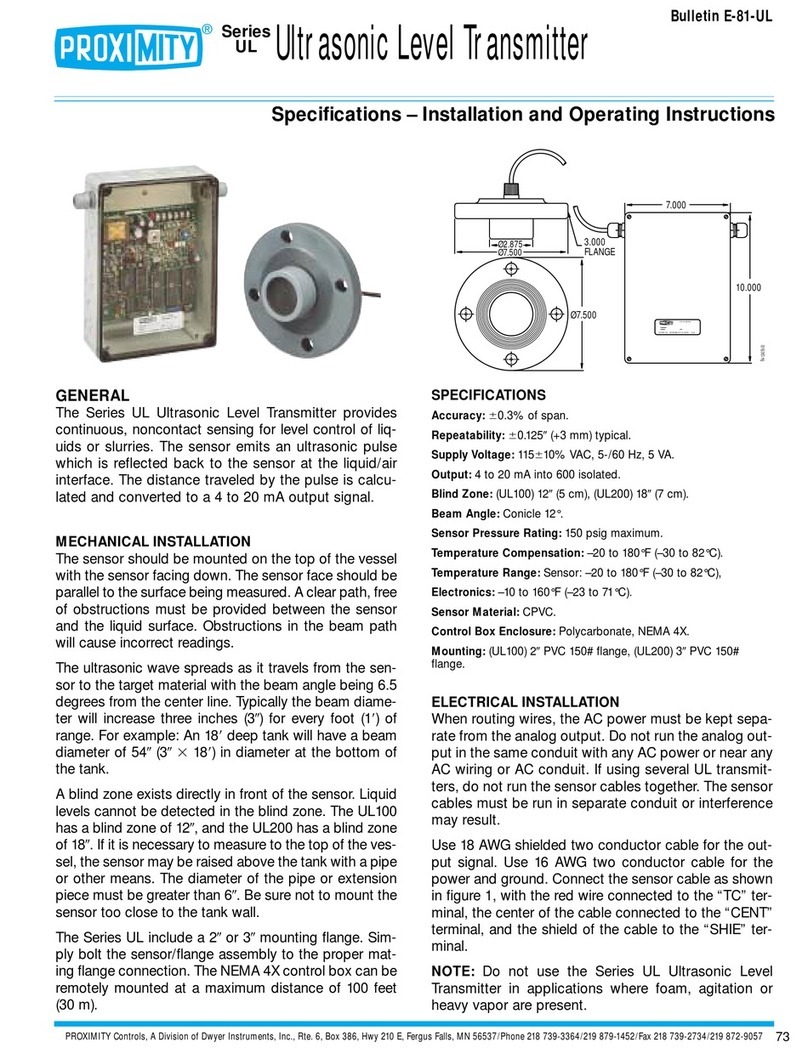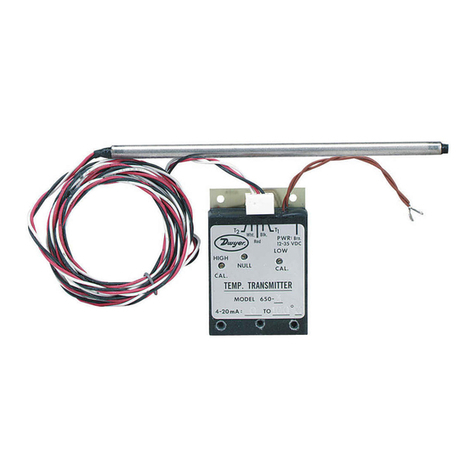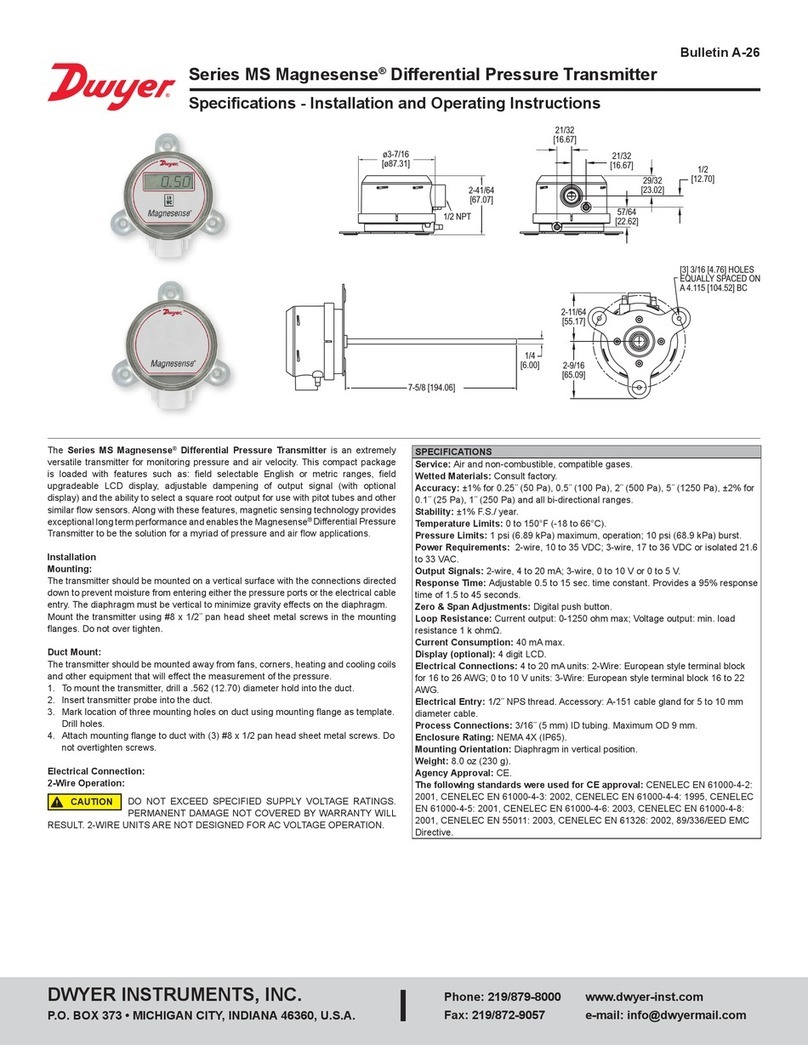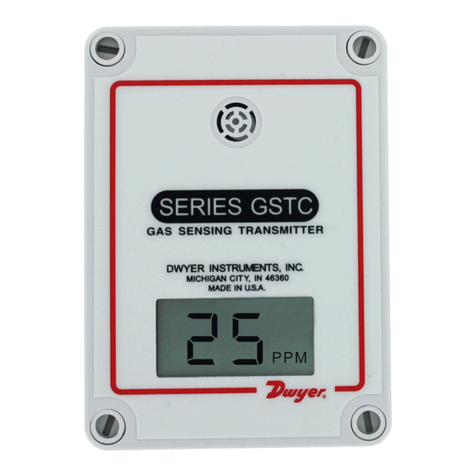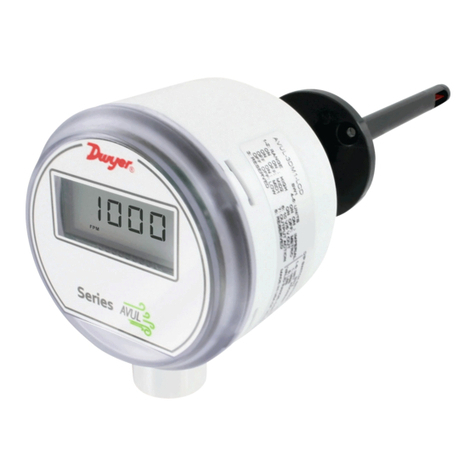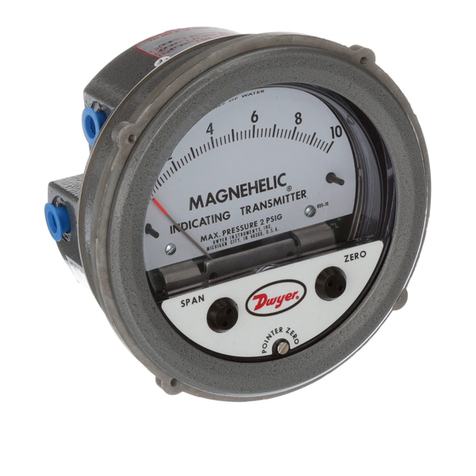
DIP SWITCH SETTINGS
To access the DIP SWITC , remove the cover of the unit as shown in Figure 1. The
DIP SWITC is located on the back of the circuit board.
ALL DIP SWITCHES are factory set to “ N”
5V/10V utput Select (Applies only to Voltage utput units)
DIP SWITC #1 OFF: Output = 0-5V
DIP SWITC #1 ON: Output = 0-10V
Zero Suppression (Applies only to Voltage utput Units)
DIP SWITC #2 OFF : Output range = 1-5V or 2-10V, depending on output range
DIP SWITC #2 ON : Output range = 0-5V or 0-10V, depending on output range
Upper Display reads RH or DEW P INT
DIP SWITC #3 OFF: Upper Display reads Dew Point
DIP SWITC #3 ON: Upper Display reads R
RH UTPUT, Normal or Invert
DIP SWITC #4 OFF: Output is inverted
DIP SWITC #4 ON: Output is Normal
When set to normal output, the output increases as the R increases. When set to
inverted output, the output decreases as the R increases.
Example: Normal 4-20 mA output, 0%R = 4 mA, 100% R = 20 mA
Inverted 4-20 mA output, 0%R = 20 mA, 100% R = 4 mA
TEMP UTPUT, Normal or Invert
DIP SWITC #5 OFF: Output is inverted
DIP SWITC #5 ON: Output is Normal
When set to normal output, the output increases as the temperature increases.
When set to inverted output, the output decreases as the temperature increases.
Example: Normal 4-20 mA output, -20°F = 4 mA, +140°F = 20 mA
Inverted 4-20 mA output, -20°F = 20 mA, +140°F = 4 mA
°F/°C Select
DIP SWITC #6 OFF: °C
DIP SWITC #6 ON: °F
Temperature utput Range Select
The temperature range applies only to the current or voltage output. If the unit has
a display, it will display temperature from -40 to +140°F (-40 to +60°C). If the unit is
set to read DEW POINT, the output range of the DEW POINT will be the same as
the Temperature Output Range.
Note: The display will indicate temperature even if the unit does not have a tem-
perature output.
TR UBLESH TING
1. Verify that the unit is mounted in the correct position.
2. 4-20 mA Models:
Verify appropriate supply voltage. The transmitter requires a minimum of 10 and a
maximum of 35 VDC at its connection for proper operation. Choose a power sup-
ply with a voltage and current rating which meets this requirement under all oper-
ating conditions. If the power supply is unregulated, make sure voltage remains
within these limits under all power line conditions. Ripple on the supply should not
exceed 100 mV.
Loop Resistance – The maximum allowable loop resistance depends on the
power supply voltage. Maximum loop voltage drop must not reduce the transmitter
voltage below the 10 VDC minimum. Maximum loop resistance can be calculated
with the following equation. Vps is the power supply voltage.
Rmax =
Some receivers, particularly loop powered indicators, may maintain a fixed loop
voltage to power the device. This voltage drop must also be subtracted from the
power supply voltage when calculating the voltage margin for the transmitter. The
following equation takes this into account. Vrec is the receiver fixed voltage.
Rmax =
0-10 V utput Models:
Verify appropriate supply voltage. The 0-10V output models require a DC supply of
15 to 35 V or an AC supply of 15-29 V for proper operation maximum. Maximum
output load is 5 mA.
FIELD SENS R REPLACEMENT
Replacement sensors are available. Replacement sensors are factory calibrated
and do not require any further calibration.
1. Remove cover as shown in Figure 1.
2. Remove existing sensor as shown in Figure 8.
3. Replace the sensor with appropriate replacement sensor.
4. Reattach cover to base plate.
Remote Display
For models that are ordered without an integral LCD display, remote display Model
A-449 can be used to display the temperature and humidity or dew point. The mini
USB plug of the remote display plugs into the receptor on the side of the housing.
After a short warm up time, the display will begin to show the current temperature
and humidity or dew point measurements. umidity or dew point can be selected
via the internal dip switches as described earlier in this manual.
Sensor is sensitive to Electro-Static Discharge (ESD). Follow
industry standard practice for control and protection against
ESD. Failure to exercise good ESD practices may cause damage to the sensor.
Range
-4 to +140°F (-20 to +60°C)
+40 to +90°F (+4.4 to +32.2°C)
0 to +100°F (-17.8 to +37.8°C)
-20 to +140°F (-28.9 to +60°C)
Dip Switch 7
OFF
OFF
ON
ON
Dip Switch 8
OFF
ON
OFF
ON
Figure 7
Vps-10.0
20 mA
Vps-10.0-Vrec
20 mA
Figure 8
N TICE
www. .com information@itm.com1.800.561.8187
